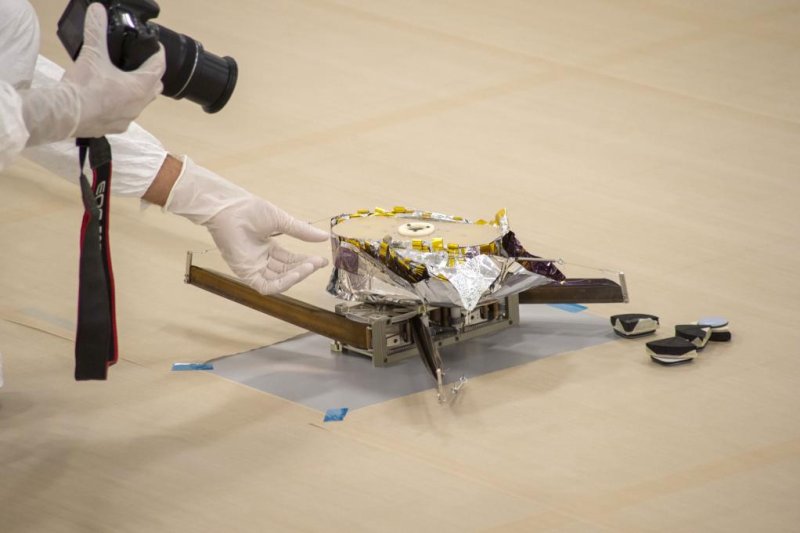1 of 2 | NASA scientists recently tested the deployment of the solar sail designed to propel the agency's NEA Scout, a CubeSat, to a near-Earth asteroid. Photo by NASA/MSFC/Emmett Given
Sept. 27 (UPI) -- NASA's Near-Earth Asteroid Scout, a CubeSat designed to study asteroids orbiting near Earth, executed a full solar sail deployment during recent tests in Alabama.
Earlier this month, NEA Scout underwent environmental testing in preparation for its eventual flight on the inaugural Space Launch System mission, currently scheduled for December 2019. Scout is one of six CubeSats NASA selected for the mission.
"NEA Scout will perform a reconnaissance fly-by and take pictures of an asteroid to learn more about the risks and challenges they may pose to future human exploration missions," Les Johnson, NEA Scout's solar sail principal investigator at NASA's Marshall Space Flight Center in Huntsville, Alabama, said in a news release. "It will deploy from the rocket after the Orion spacecraft is separated from the upper stage."
Once deployed, the mini satellite will be powered by an aluminized polyimide solar sail, which harnesses the power of the solar particles streaming through space. The massive square sail, each side as long as a school bus, negates the need for an engine or fuel.
The sail is supported by four arms, or booms. During the most recent round of testing, engineers deployed the booms and sails to grade the technology's design and functionality.
The last time scientists tested the sail, it was half the size it is now. Since then, the design team has made a number of changes.
"We incorporated a larger motor to help retract the booms after deployment and upgraded the software to perform the test," said Tiffany Lockett, a sail systems engineer. "Also, we improved the sail restraint tab that holds the sail in place prior to deployment for easier sail deployment, upgraded the connection between the sail and the booms, and included a pin puller to help lock the sail spool during transportation."
Researchers had to do their best to minimize friction in the testing room. There won't be gravity when the sail is deployed in space.
"We learned a lot from the results of today's test. The motor performed as anticipated and three of the four sail restraint tabs released on time," said Alex Few, a sail systems mechanical designer. "The new improved booms operated much better under less friction."
Few and his colleagues will analyze the test results over the next few weeks and consider new design tweaks.
NEA Scout doesn't yet have a target asteroid, but with NASA routinely delaying the scheduled inaugural launch of the SLS rocket and Orion craft, it's likely scientists will have plenty of time to consider their options.















